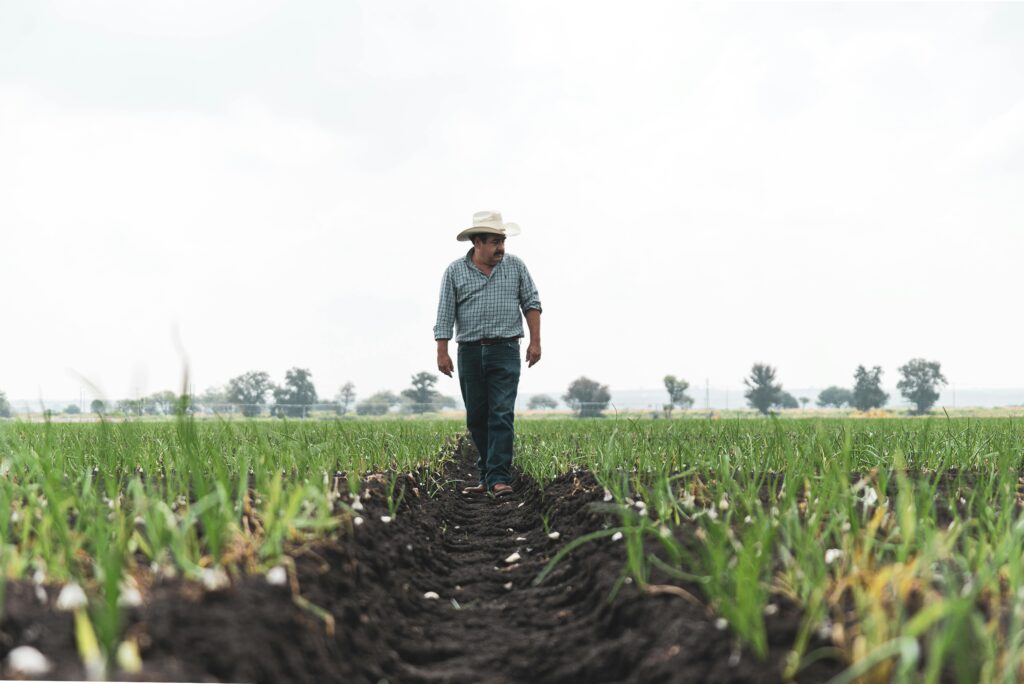25 Jul 2025
Groundwater Recharge: A Vital Solution for Sustainable Water Management

Groundwater forms the very backbone of the water supply globally as it provides for the drinking, agricultural, and industrial needs of billions. Over-extraction and pollution, alongside increasing urbanisation and climate change, threaten aquifers across the globe, making groundwater recharge an important sustainable strategy for water management.
This article looks at what groundwater recharge is, why it is important, the methods of recharge, and possible ways in which an individual or community can help with the recharge.
 In places like India, California, and the Middle East, over-extraction, coupled with decreased natural recharge brought about by urbanisation and climate change, has resulted in the depletion of aquifers. Recharge activities serve to replenish these reserves before they disappear outright, averting scarcity, ensuring food security, and maintaining the ecosystems dependent on groundwater in the process.
In places like India, California, and the Middle East, over-extraction, coupled with decreased natural recharge brought about by urbanisation and climate change, has resulted in the depletion of aquifers. Recharge activities serve to replenish these reserves before they disappear outright, averting scarcity, ensuring food security, and maintaining the ecosystems dependent on groundwater in the process.
 Groundwater recharge forms the foundation of sustainable water management as it contributes to addressing environmental and societal issues. The draining of aquifers without restoration is a threat to global food security because agriculture depends on groundwater.
In India, more than 60 per cent of irrigation is through groundwater, according to the World Bank. Falling water tables without recharging shift the burden onto farmers and utilities as they must use more energy to bring water to the earth by pumping it. Recharge also prevents land subsidence that may lead to structural damage to buildings, roads, and pipelines. Ecologically, it supports groundwater-dependent ecosystems, wetlands, rivers, and springs, among others, promoting biodiversity.
Recharge also prevents floods in built-up areas, where overfilled rainwater is redirected into aquifers rather than stormwater drainage. With droughts becoming even more intense and rain patterns being disrupted by climate change, groundwater recharge is an important way of establishing water resilience.
Groundwater recharge forms the foundation of sustainable water management as it contributes to addressing environmental and societal issues. The draining of aquifers without restoration is a threat to global food security because agriculture depends on groundwater.
In India, more than 60 per cent of irrigation is through groundwater, according to the World Bank. Falling water tables without recharging shift the burden onto farmers and utilities as they must use more energy to bring water to the earth by pumping it. Recharge also prevents land subsidence that may lead to structural damage to buildings, roads, and pipelines. Ecologically, it supports groundwater-dependent ecosystems, wetlands, rivers, and springs, among others, promoting biodiversity.
Recharge also prevents floods in built-up areas, where overfilled rainwater is redirected into aquifers rather than stormwater drainage. With droughts becoming even more intense and rain patterns being disrupted by climate change, groundwater recharge is an important way of establishing water resilience.
 Rainwater gutters are a feasible solution to recharge groundwater in urban and suburban areas, especially when looking for a cost-effective solution. These collect runoff on the rooftops so that the water does not enter the storm drains, and this encourages the renewal of the aquifers.
So here is what happens:
Rainwater gutters are a feasible solution to recharge groundwater in urban and suburban areas, especially when looking for a cost-effective solution. These collect runoff on the rooftops so that the water does not enter the storm drains, and this encourages the renewal of the aquifers.
So here is what happens:
 Groundwater recharge brings multiple benefits for sustainable water management:
Groundwater recharge brings multiple benefits for sustainable water management:
What is Groundwater Recharge?
Groundwater recharge, sometimes called deep drainage or deep percolation, is the flow of water from the surface into underground aquifers. Aquifers made of permeable rock or unconsolidated materials like sand and gravel act as natural reservoirs, storing water beneath the earth's surface. Recharge can occur naturally from rainfall water or infiltration by surface water or artificially from an engineered system that directs water into an aquifer. The recharge process is vital for maintaining groundwater levels and long-term availability of water.Why Do We Need Groundwater Recharge?
With more than 2 billion people on the planet depending on groundwater for drinking, irrigation, and industrial purposes, the aquifers are facing ever-increasing pressure. About 50% of global drinking water and 70% of agricultural water use is expected to be from groundwater sources, according to the United Nations. In places like India, California, and the Middle East, over-extraction, coupled with decreased natural recharge brought about by urbanisation and climate change, has resulted in the depletion of aquifers. Recharge activities serve to replenish these reserves before they disappear outright, averting scarcity, ensuring food security, and maintaining the ecosystems dependent on groundwater in the process.
In places like India, California, and the Middle East, over-extraction, coupled with decreased natural recharge brought about by urbanisation and climate change, has resulted in the depletion of aquifers. Recharge activities serve to replenish these reserves before they disappear outright, averting scarcity, ensuring food security, and maintaining the ecosystems dependent on groundwater in the process.
What is the Use of Groundwater Recharge?
The groundwater recharge provides many essential functions for humanity. It maintains level in the aquifers, ensuring a regular water supply to wells and boreholes. It further enhances crop production by irrigating crops in arid regions. Recharge also prevents land subsidence, which occurs when excessive groundwater extraction causes the land to sink and damages infrastructure. The water passes through layers of soil, acting as a natural filter and thus diminishing contamination. Recharge stores water underground, which helps resist drought, as opposed to a surface reservoir that is susceptible to evaporation.Importance of Groundwater Recharge
 Groundwater recharge forms the foundation of sustainable water management as it contributes to addressing environmental and societal issues. The draining of aquifers without restoration is a threat to global food security because agriculture depends on groundwater.
In India, more than 60 per cent of irrigation is through groundwater, according to the World Bank. Falling water tables without recharging shift the burden onto farmers and utilities as they must use more energy to bring water to the earth by pumping it. Recharge also prevents land subsidence that may lead to structural damage to buildings, roads, and pipelines. Ecologically, it supports groundwater-dependent ecosystems, wetlands, rivers, and springs, among others, promoting biodiversity.
Recharge also prevents floods in built-up areas, where overfilled rainwater is redirected into aquifers rather than stormwater drainage. With droughts becoming even more intense and rain patterns being disrupted by climate change, groundwater recharge is an important way of establishing water resilience.
Groundwater recharge forms the foundation of sustainable water management as it contributes to addressing environmental and societal issues. The draining of aquifers without restoration is a threat to global food security because agriculture depends on groundwater.
In India, more than 60 per cent of irrigation is through groundwater, according to the World Bank. Falling water tables without recharging shift the burden onto farmers and utilities as they must use more energy to bring water to the earth by pumping it. Recharge also prevents land subsidence that may lead to structural damage to buildings, roads, and pipelines. Ecologically, it supports groundwater-dependent ecosystems, wetlands, rivers, and springs, among others, promoting biodiversity.
Recharge also prevents floods in built-up areas, where overfilled rainwater is redirected into aquifers rather than stormwater drainage. With droughts becoming even more intense and rain patterns being disrupted by climate change, groundwater recharge is an important way of establishing water resilience.
Groundwater Recharge Methods
The groundwater recharge can be done both indirectly and directly, depending on the prevailing environmental conditions. There are three main methods that we are going to examine below: natural recharge, artificial recharge, and depression-oriented recharge.1. Natural Recharge
Natural recharge is a process whereby precipitation, river, or lake water percolates into the ground and trickles to the water tables. This process depends on the soil permeability, vegetation cover, and the intensity of rainfall. To cite an example, in the villages or places with sandy or gravelly soil, there is no problem for rainwater to get into the soil to recharge the aquifers. Natural recharge is boosted by forests and grasslands as they slow runoff, allowing water to percolate. The process is, however, disrupted by urbanisation, which covers permeable surfaces with concrete and asphalt, decreasing infiltration. Natural recharge can be increased through the protection of natural landscapes, the restoration of wetlands, and the mitigation of impermeable surfaces. In other regions, such as the UK, where rainfall is widespread, it is important to maintain green spaces that enhance natural recharge rates.2. Artificial Recharge
Artificial recharge is a human intervention that involves land and water management for directing excess surface water into aquifers. Under this process, recharge wells, infiltration basins, percolation tanks, and check dams are constructed to increase recharge. Recharge wells are used to inject water directly into the aquifers, and this method is extremely useful for deep aquifers in urban areas. Infiltration basins are shallow excavations that collect surface water and let it percolate slowly through the soil. Percolation tanks are more popular in rural areas where they store water and enhance its infiltration with time. Artificial recharge in areas such as Rajasthan, India, increased groundwater levels by 15-25% in five years, according to a 2025 study in Water (MDPI). Methods like these work well where natural recharge is deficient or where groundwater demand is high, but pose contamination problems if not well planned for.3. Depression-Focused Recharge
This method involves natural or constructed depressions, be it ponds or basins, that gather water and let it infiltrate the subsurface. These depressions concentrate water in places where the soil is highly permeable. For example, a natural depression may fill with water, forming a temporary pond upon rainfall, which slowly recharges the underlying aquifer. Engineers may improve the recharge by constructing basins or trenches within permeable soils. In arid zones like parts of Australia, depression-focused recharge collects seasonal runoff, thereby greatly increasing groundwater levels.Groundwater Recharge with Rainwater Gutters
 Rainwater gutters are a feasible solution to recharge groundwater in urban and suburban areas, especially when looking for a cost-effective solution. These collect runoff on the rooftops so that the water does not enter the storm drains, and this encourages the renewal of the aquifers.
So here is what happens:
Rainwater gutters are a feasible solution to recharge groundwater in urban and suburban areas, especially when looking for a cost-effective solution. These collect runoff on the rooftops so that the water does not enter the storm drains, and this encourages the renewal of the aquifers.
So here is what happens:
- Collection: Rainwater collects in gutters on the rooftops. Rainy Filters suggests that a 100 sq m roof situated in a place that receives 600 mm of rain will be able to collect approximately 60,000 litres of water a year.
- Filtration: Water flows over screens or mesh filters (which eliminate debris, leaves, and pollutants) into the recharge system, so there is clean water in the system.
- Recharge System: Filtered water is directed into either recharge pits or wells or an infiltration trench filled with permeable materials such as gravel or sand, allowing slow percolation into the aquifer.
- Maintenance: Gutters, filters, and pits must be cleaned regularly to prevent blockage and resulting inefficiency.
Recharge Rate Estimation Methods
Effective water management requires an estimation of the rate of groundwater recharge. There are three main approaches: physical, chemical, and numerical.1. Physical Methods
Physical methods measure the flow of water through the soil by using instruments such as lysimeters or soil moisture meters. Accurate recharge information is obtained by the use of lysimeters (buried containers, which gather infiltrating water). Soil moisture sensors monitor variability in the water content of soil, which shows patterns of infiltration. Although precise, these techniques are not only expensive, but also restricted to localised use, thus they are more suited to research than to being conducted on an industrial scale.2. Chemical Methods
Chemical methods use tracers such as chloride, nitrates, or isotopes to determine recharge rates. The chloride mass balance approach involves comparing chloride in rain and groundwater to determine infiltration. This method works well in dry lands, where evaporation causes chloride to become concentrated in the land. Water sources can be understood through isotope analysis, i.e., elements such as deuterium or Oxygen-18. Nonetheless, chemical methods are too expensive and accessible only to people with specialised equipment and skills.3. Numerical Models
Numerical models run groundwater flow using software as MODFLOW or HYDRUS. They combine rainfall, soil information, and the characteristics of the aquifers to estimate recharge rate over vast regions.Benefits of Groundwater Recharge
 Groundwater recharge brings multiple benefits for sustainable water management:
Groundwater recharge brings multiple benefits for sustainable water management:
- Sustained Water Supply: Recharge keeps aquifers alive to the usages of drinking, irrigation, and industrial water during dry seasons.
- Water Quality Improvement: As water seeps through the soil, contaminants like nitrate and suspended sediments are filtered out, improving the water's quality.
- Drought Resistance: Recharged aquifers keep water stored for a longer period during drought, reducing dependence on surface water sources.
- Land Subsidence: Replenishing the aquifer prevents its levels from dropping, avoiding land sinking, which might damage infrastructure.
- Ecosystem Support: Recharge sustains wetlands, rivers, and other groundwater-dependent ecosystems, thereby ensuring vibrant biodiversity.
- Flood Reduction: Flux of rainwater into the aquifers further reduces surface runoff and flooding.
Factors Affecting Groundwater Recharge
Several factors hamper groundwater recharge effectiveness. So, it requires careful planning:- Soil Permeability: Permeability in sandy soils is higher than in clay-heavy soils that retain water and thus decrease recharge.
- Rainfall Patterns: Light rainfall is best in promoting infiltration, while high-intensity rainfall generates runoff, reducing recharge.
- Land Use: An urban area with impermeable surfaces usually restricts recharge capacity, whereas green spaces such as parks help recharge.
- Vegetation: Deep-rooted vegetation provides pathways for infiltration, whereas sparse vegetation promotes runoff.
- Aquifer Characteristics: Depending on the aquifer's depth, porosity, and permeability, it may or may not be capable of being recharged.
- Climate: Wet climates, such as the UK, can support faster rates of recharge, whereas it is quite limited in arid climates.
- Human Activities: Over-extraction, pollution, and land development hamper and disrupt natural recharge processes.
Conclusion
Recharging groundwater is an important strategy to fight water scarcity and ensure sustainable water management. Aquifers can be recharged through natural, artificial, or depression-oriented means for supporting agriculture, ecosystems, and communities at large. Techniques such as installing rain gutters provide recharge capability at the household level and enable them to participate actively. With climate change and population increase putting enormous pressure on water resources, groundwater recharge mechanisms are critical for building a resilient water future. Through the implementation of these methods alongside awareness creation, groundwater resources shall be protected for future generations.FAQs
How Can I Recharge Groundwater at Home? Homeowners can recharge groundwater using a rainwater harvesting system. From gutters that collect rooftop runoff, filter the rainwater and direct it to a recharge pit or an open trench filled with gravel or sand. The maintenance must be done regularly to ensure it works. All in all, gutters and filters should be cleaned regularly. It is best to consult a local hydrologist who can further customise the design of your recharge system according to your soil and aquifer conditions. How to Estimate Groundwater Recharge? Recharge estimation means could be physical (lysimeters), chemical (chloride tracer), or numerical (MODFLOW). Each requires specific data like rainfall, soil properties, etc. Using different methods and consulting experts in the field will guarantee that estimates are accurate enough to help manage water effectively. Why is Groundwater Recharge Important? Groundwater recharge maintains the aquifers, ensuring a reliable water supply for domestic uses, irrigation, and industry. It prevents land subsidence, improves water quality, and sustains ecosystems, including wetlands. Recharge increases resilience against droughts and climate change, making it essential for sustainable water management.More rain-gutters
Get in touch with us
Phone
1800 833 6675 